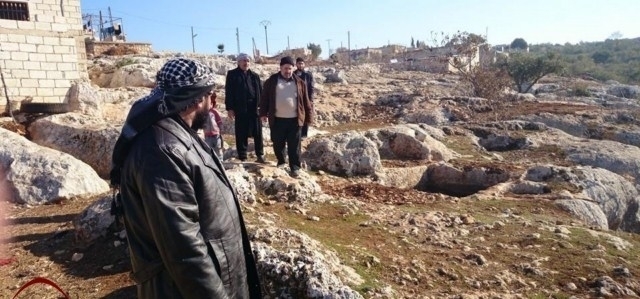Life in the Druze villages in Idleb goes on nearly as normal. This reality has put an end to fears about the impossibility of coexistence under the new conditions arising in the area since the regime lost control of it. The Druze are traveling between opposition and regime-held areas through the security checkpoints of both parties, and are rarely harassed because of their religious affiliation or neutral position in the conflict. While it doesn’t appeal to the regime, the Druze people’s neutral stance allows them to live in acceptable conditions while in the middle of a kind of minefield that has surrounded them since the outbreak of events more than three years ago.
Limited Emigration
Dozens of Druze families left the area for Suweida, the primary stronghold of the Druze in Syria. But the vast majority of these villages’ residents decided to stay and adapt to the newly emerging situation and go on with their day-to-day life like before. Of course, many of the kidnappings and ransom demands made against the region’s sons were unrelated to any issues of sectarian affiliation, but were motivated by money. In fact, these events did not cause the residents to abandon their villages or evacuate en masse. That choice, in turn, paved the way for choices other than emigration, especially since thousands of displaced people from neighboring villages found these villages to be a place of refuge to escape the conflict, and they were received with great interest.
Islamic Hijab as Substitute for the White Head Kerchief
Usually, religious Druze wear a white kerchief [on their heads], while for some it's not even a problem to leave their forehead visible. The commitment to wearing the kerchief and the style of dress varies by age and region. In the villages of Idleb, it's rare to see an unveiled women because the religious teachings there are more extreme and conservative compared to other Druze areas. Since the outbreak of events in Syria, there have been a lot of changes concerning certain behaviors. For example, female students who used to have more freedom of dress and movement have now been obliged to wear the Islamic hijab instead of the white kerchief as a way of adapting to the new reality.
Taghreed, an 11-year-old girl, says that she prefers the white kerchief she used to wear on her head to the veil, but her family convinced her to wear the veil. Many of her friends did the same, and started wearing the veil younger than she had. Makram, a university student from the region said that, “Since the start of events, Druze villagers have tended toward more fundamentalism, maybe as a reaction to sensing the growth of fundamentalist religious forces in their immediate vicinity. It is no longer possible to see an unveiled girl—whatever her age—or a girl going out alone, because severe restrictions have been imposed on the movement of people in these villages. Moreover, some women have been prevented from going alone to work or to universities for fear of being kidnapped.” Makram continued, saying that, “Before ISIS was expelled from the region, some of its members delivered messages saying that the group intended to force people in these areas to destroy some of the Druze villages’ holy shrines. This got people thinking about ways to move the shrines to avoid such threats. But a solution soon came at the hands of the Free Syrian Army factions that expelled ISIS from the region and took its place.”
These villages were not living in a state of openness and freedom in the past. Rather, they were tightly controlled by traditions and customs, sometimes in the extreme. Many people see this fact as having enabled, in part, the residents to accept changes to their former lifestyle. Up to now even, this does not seem to be final. The region is still vulnerable to significant changes with developments of conditions in Syria in general. But for the moment it's still proof of the possibility of some kind of coexistence between the minority and the majority. It’s true that it’s not a perfect experiment, but at least it could lead to other developments, and to more openness and genuine coexistence.


